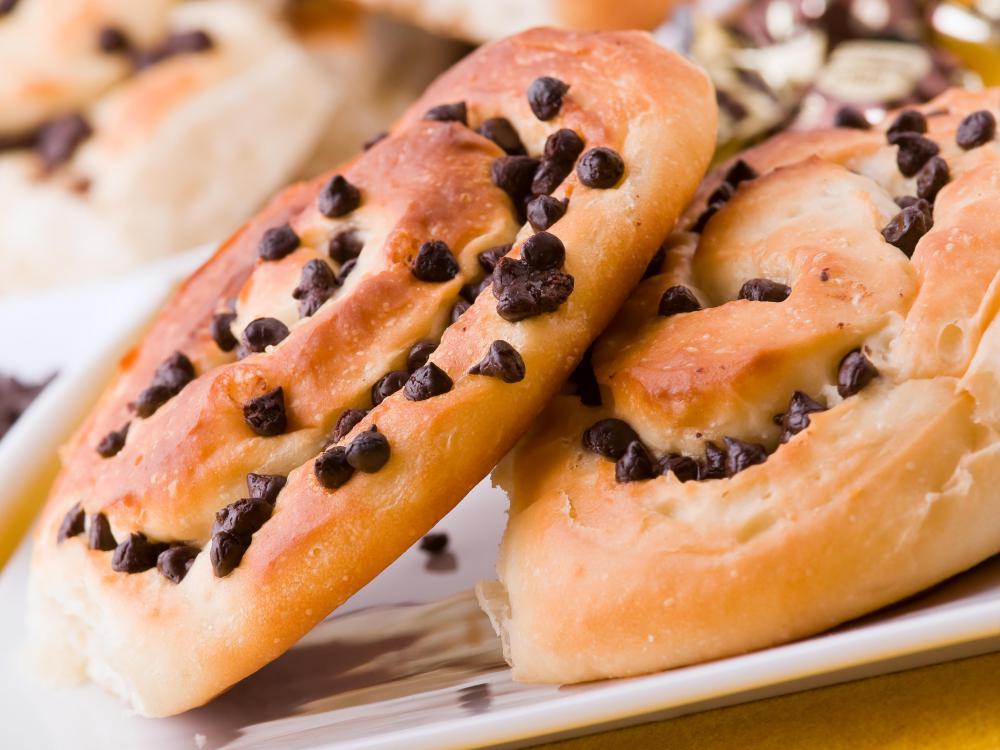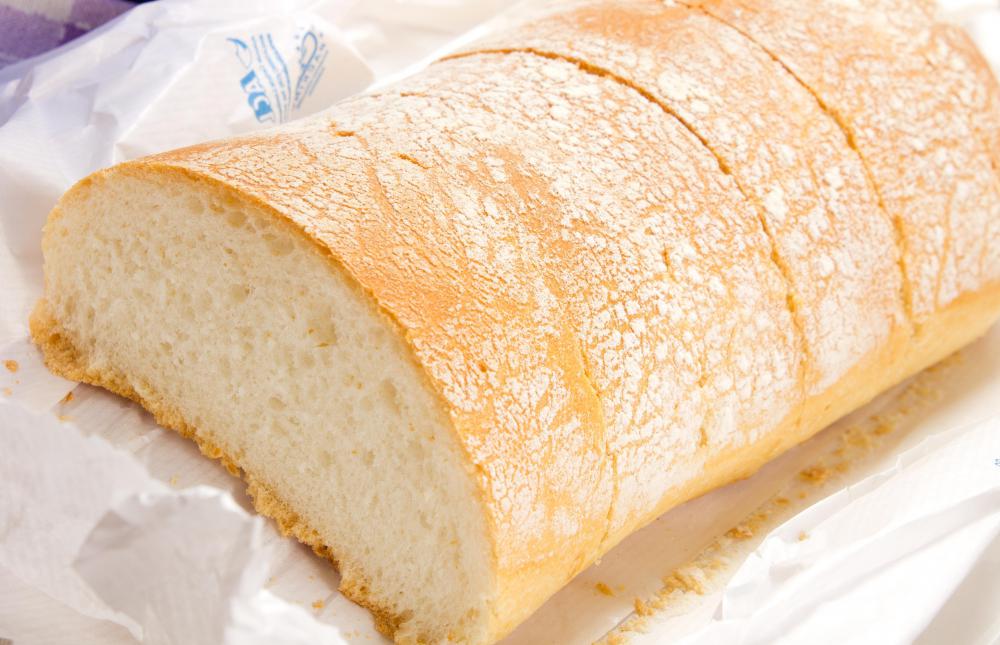At DelightedCooking, we're committed to delivering accurate, trustworthy information. Our expert-authored content is rigorously fact-checked and sourced from credible authorities. Discover how we uphold the highest standards in providing you with reliable knowledge.
What is Closed Crumb Bread?
Closed crumb bread refers to the inner texture of the bread beneath the crust. Generally bakers use the terms open crumb and closed crumb bread to describe the degree of density of the bread and whether the bread is likely to have holes in its interior. The bread beneath the crust is called the crumb, and knowing what kind of crumb bread provides can inform your bread choice decisions.
Open crumb bread tends to have an interior lacy structure, and is often chewier than closed crumb bread varieties. It’s comparable to a loosely knit shawl, while the closed crumb bread could be compared to tightly knit socks. Open crumb breads are often breads like french breads and pugliese. They may have attentional bubbles in the bread that open up the crumb. Sourdough breads are almost always open crumb breads because the sourdough starter or “chef” causes the bread to trap more air.

Conversely, closed crumb breads are likely to have a more delicate crumb and the bread is denser. A sourdough loaf and a closed crumb loaf of about the same size could be compared in weight. The sourdough will weigh significantly less since the dough is not as tightly packed together when it is baked. The closed crumb bread loaf will have more actual bread per square inch than an open crumb and will generally be softer and denser instead of chewy and light.

The average loaf of white or wheat bread tends to be a closed crumb bread. Another example is brioche, which contains eggs and thus traps less air than does a sourdough or french bread loaf. Quick breads like muffins, pancakes, and biscuits should be closed crumb, which is why instructions in recipes tell you not to stir these breads more than is necessary.

If you note tunnels in your muffins, you’ve created an open crumb instead of closed crumb bread, meaning you’ve overbeaten your muffin dough. Overmixing, causing the dough or batter to trap more air, can result in a higher rise but a looser crumb. You want to avoid this because a closed crumb muffin that has been mixed just enough is much more delicate and tender. No one really wants a chewy muffin or a tough pancake.
Closed crumb bread is often the best choice for sandwiches, particularly when you want sliced bread. In fact, if you ever buy sliced sourdough or french bread, you might notice that the crumb is tighter than is usual in an unsliced loaf of french bread. Holes can make using french bread for sandwiches impractical, so manufacturers who sell sliced french bread aerate it less to avoid large holes in the bread. On the other hand, if you buy crusty french bread and slice it lengthwise, the holes can actually be to your advantage, since they don't affect the crust and may provide extra room to place ingredients. Further, many prefer a nice, chewy, crusty bread to a closed crumb style as it adds more crunch and texture to a sandwich.
AS FEATURED ON:
AS FEATURED ON:













Discussion Comments
@donasmrs-- "Crumb" is a term used in baking and all bakers know what it means. It's just what the inside of the bread looks like. Or more specifically, the density of the bread, the number and size of air pockets and also color. An experienced baker can tell you many different things about a bread by just looking at the crumb.
If the bread crumb is uniform in texture and appearance and does not have large air pockets, it's considered to be closed crumb. Irregular crumb with large air pockets mean an open crumb.
Closed crumb bread seems like a misnomer. I had imagined crumbs inside the bread! But the term has nothing to do with crumbs.
I never realized that over-mixing can be such a bad thing. It didn't occur to me that mixing means adding more air to the mix. It makes sense though. Now I know why some of my breads and muffins did not turn out right! I guess I was making them open crumb instead of closed crumb. I'll be certain to avoid this next time.
Post your comments